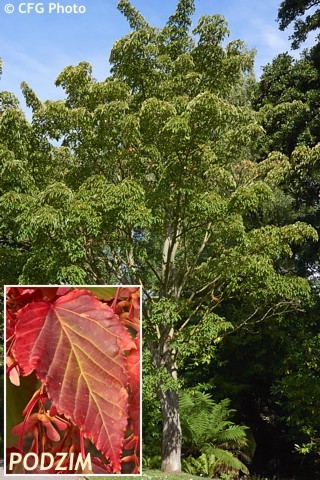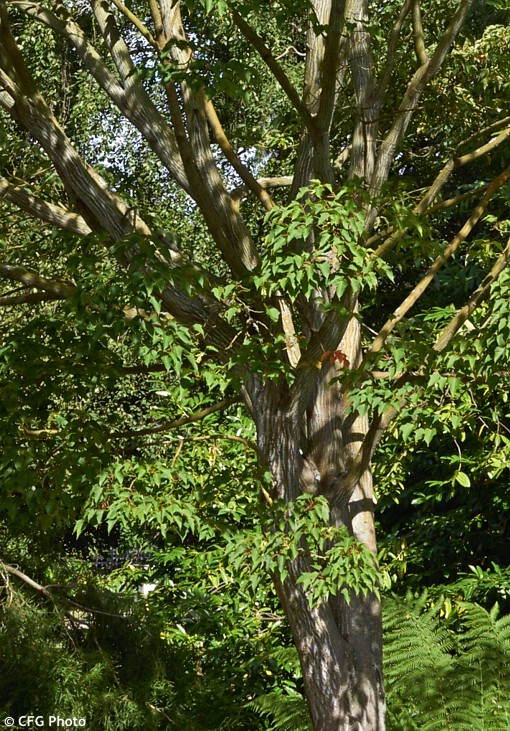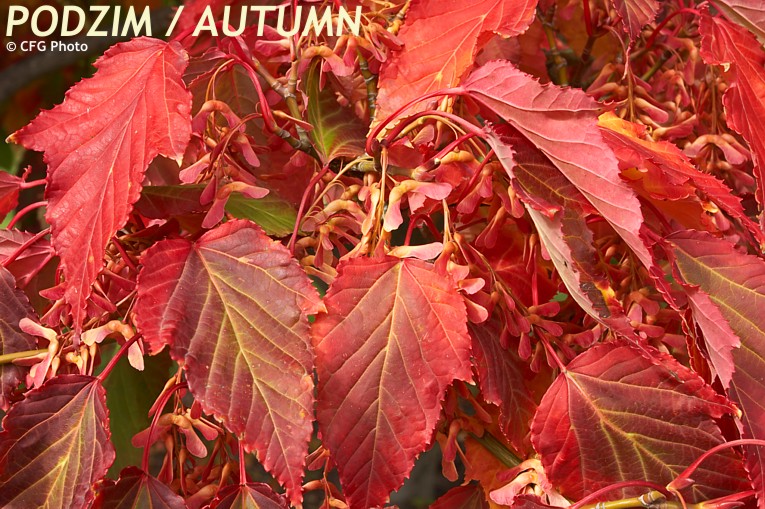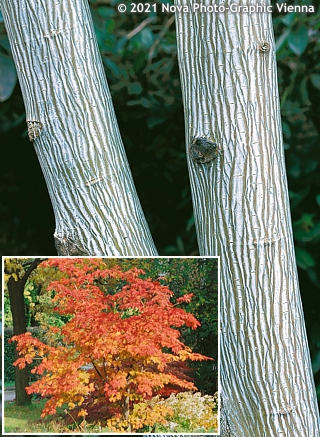Acer davidii snakebark maple, stripebark maple
size/type
medium-sized tree,medium-sized tree
usual height
8-15m
usual width
3-6m
leaves
deciduous broadleaf
colour of leaves
flowers
less showy but noticeable
blooming time
April-April
location
full to partial sun
soil type
acidic (peaty)
soil moisture requirements
evenly moist (dislikes drought)
USDA zone (lowest)
5 (down to -29°C)
winter protection
for zone 5+6

for zone 7

categorized
Description of the plant:
Snakebark maple is a distinctive maple species that was discovered in China by Jean Pierre Armand David in 1869. Being quite easy to grow and non-problematic to transplant one wonders why it remains in the group of plants difficult to locate both in garden centres as well as private gardens. It is cultivated mainly for its picturesque bark which is painted with green and creamy white vertical stripes. Since seedlings of snakebark maple are quite variable modern nurseries select plants with stable features such as enhanced leaf size and more interesting shape. They are deciduous, partly glossy, rich green in summer and golden, orange and scarlet red in autumn. They are typically ovate with a pointed tip but the new selections make larger leaves that are shallowly lobed with two prominent tips at both sides. Stalks and veins are purple-red. In spring it makes 5-7 cm long flower clusters (racemes).
Snakebark maple often forms a multi-stemmed tree with a funnel-shaped to oval-shaped crown. It likes moderately fertile, acid, evenly moist soil which will ensure rich autumn colouring. It can be pruned or trimmed in late winter. Hardy to about -29°C (USDA zone 5).
Last update 09-01-2013
QUICK PRICE OVERVIEW
CURRENTLY SOLD OUT


















